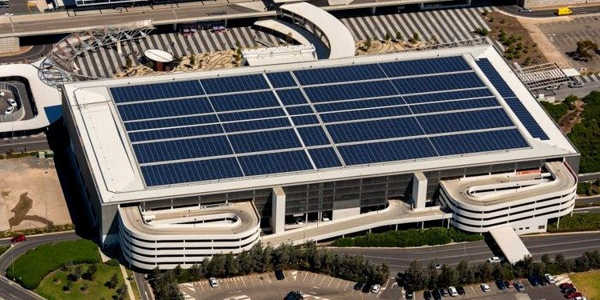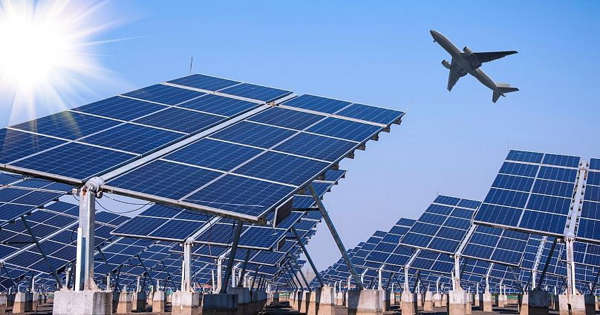According to new research, installing solar panels on the roofs of Australian airport buildings could be a cost-effective step toward net-zero emissions.
The electricity generated by residential solar panels in a regional Australian city was compared to the potential green energy production of 21 leased federal airports by RMIT University researchers. They discovered that installing large-scale solar panels at airports would generate 10 times more electricity than the city’s 17,000 residential panels while offsetting 151.6 kilotons of greenhouse gasses annually.
According to Dr. Chayn Sun, the analysis demonstrated the value of concentrating renewable energy efforts on large, centralized rooftop solar systems. “We can’t rely on small residential solar panels to get us to a zero-emission economy,” she says, “but installing large panels in places like airports would get us a lot closer.” “We hope that our findings will inform future research in solar deployment for large buildings and help guide energy policy.”
A new study has found Australia’s government-owned airports could produce enough electricity to power 136,000 homes if they had large-scale rooftop solar systems installed.
“There is a lot of potentials to help national economic development while also contributing to greenhouse gas emission reduction targets.”
Sun, a geospatial scientist at RMIT’s School of Science, believes airports are ideal for solar panels but aren’t being used to their full potential because many Australian airports lack adequate solar systems.
“Airports get good sun exposure because they aren’t shaded by tall buildings or trees, making them an ideal location to harness the sun’s energy,” she explained.
Australia is in the grip of an energy crisis, but our solar energy resources, such as airport rooftops, are being squandered. Using this energy source would save 63 kilotons of coal from being burned in Australia each year, which would be a significant step toward a zero-carbon future.
Geospatial researchers estimated the solar electricity generated by 17,000 residential solar panels in Bendigo, Victoria, over a year for the study, which was published in the Journal of Building Engineering.

The study’s lead author, Athenee Teofilo, a Master of Geospatial Science student, then mapped the buildings in every leased federal airport, excluding unsuitable structures such as dome and blister-type hangars, and identified 2.61km2 of usable rooftop space.
To maximize efficiency, researchers determined the optimal tilt angle for each airport’s solar arrays. Perth Airport had the most energy-generating potential; installing solar panels there could generate nearly twice the solar output of Bendigo, equaling the combined output of Adelaide, Sydney, Moorabbin, and Townsville airports.
Even Melbourne Airport would outperform Bendigo’s annual solar electricity production by nearly 12 gigatonnes. The study discovered that airport buildings that aren’t ideal for solar panels could still be useful for ground-mounted solar systems. Sun stated that the study emphasized the importance of including a plan for installing solar panels at airports in energy policies.
“Based on our solar radiation analysis, we know that airports with adequate solar systems could not only be self-sufficient but would also generate enough electricity to feed back into the grid,” she explained. We mapped airports owned by the federal government, but Australia has over 150 privately owned airfields that could also benefit from solar panels.
Because Australia receives so much solar radiation, every airport in the country would benefit from installing the appropriate type of solar panels. The same could be said for many airports and large structures all over the world. Reflections from the panels, according to Sun, would not be an issue because modern solar arrays absorb rather than reflect sunlight.
Previous research has identified airports as excellent solar generators, but the RMIT study goes a step further by precisely modeling the use of large-scale systems. The findings could also be applied to evaluating the solar potential of other sites, such as large commercial buildings, warehouses, or distribution centers.















